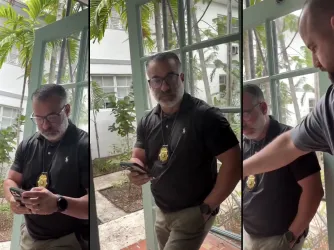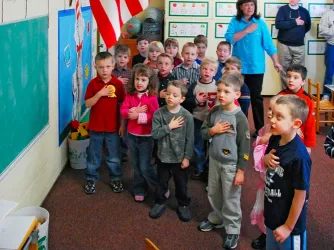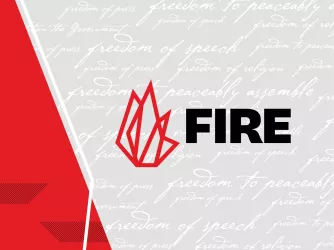Table of Contents
The marketplace of ideas: Too much market, not enough ideas

The foundations of most every argument advocating for free speech resonate with formulations from John Stuart Mill’s “On Liberty.” From case law to the larger cultural understanding of First Amendment protections, it’s hard to escape Mill’s notion that ideas operate like capital — subject to the competition of the market. Through “collision with error,” competing ideas give people with mistaken beliefs a “livelier impression of truth[.]” Perhaps Justice Oliver Wendell Holmes contextualized this best in his dissent in Abrams v. United States, arguing that “the best test of truth is the power of the thought to get itself accepted in the competition of the market, and that truth is the only ground upon which their wishes safely can be carried out.”
But what happens when the free marketplace of ideas doesn’t produce the best “truth”? What happens when the marketplace does not result in multifarious discourse, but rather an imbalance between who is and is not heard?
When debating the merits of expansive protections for free expression with my peers, I frequently run into the reality that too many students simply feel they do not have a voice on campus. While First Amendment protections defend the populace against institutional inequality, they do not prevent social inequity. Contemporary philosopher Iris Marion Young critiques the notion of a market of ideas, writing:
In the ideal of deliberative democracy ... Participants put forward proposals and criticize them, and each assents to a conclusion only because of the ‘force of the better argument’ ... This assumption fails to notice that the social power that can prevent people from being equal speakers derives ... from an internalized sense of the right one has to speak or not to speak[.]
It is impossible to escape the fact that social inequity makes it harder for some people to be heard than others. For this reason, some theorists have begun constructing fantastical doomsday scenarios, arguing that conservatives are weaponizing free speech. As students experience more social injustice, they begin to view free speech as an exclusionary foe, rather than what it truly is: a universal tool of inclusion.
Poorly-organized speaker events on college campuses are one of the most concrete examples of this troublesome dynamic — events in which speakers stand above the masses shouting uncontested views, encapsulated in a protective barrier of prestige. In too many of these situations, either students and faculty shy away from difficult questions, or spaces supposedly dedicated to discourse avoid such questioning in its entirety. There is, quite literally, a space for one voice to hold more weight than others.
Perhaps this fault in our system is why there has been a troubling rise in “disinvitation” attempts over the past decade. According to FIRE’s 2014 Disinvitation Season Report, campuses nationwide averaged at 7.5 disinvitation incidents between the years 2000 and 2006. Yet in 2016 alone, FIRE logged 42 separate incidents. Too many students across the United States are beginning to mistakenly view the invitation of controversial speakers as a means of preserving regressive norms rather than an opportunity to challenge what they may perceive to be dangerous ideologies. An inability to effectively respond to contentious beliefs has resulted in an increased respect for general censorship.
When the University of San Francisco invited former Secretary of State Condoleezza Rice to speak on campus two years ago, I viewed it as an opportunity to engage in rich dialogue, ask difficult questions, and uncover fundamental truths relevant to the political environment at the time. By carefully selecting previously submitted student questions, however, the university performed a calculated execution of a light-hearted, shallow conversation. Instead of understanding Rice’s thoughts on controversial actions she sanctioned in the Bush administration, I left with a knowledge of Condoleezza’s favorite golfing spots in California. To me, this felt just as dangerous as a successful disinvitation.
To be clear, universities and organizers of events are in no way obligated to create such discourse, or to conduct their event in any particular format. It is the student population that wields an incredible power to employ the First Amendment to promote dialogue. Some students already understand this and are implementing their own programs. Take the Cornell Political Union, for example. The Union invites controversial speakers to campus, lets them speak for 20-25 minutes, and then subjects them to a rigorous period of cross examination from the audience. Afterwards, the Union hosts a 45 minute debate and finally arrives at a resolution on the guest speaker’s argument. A productive structure like this doesn’t provide room for uncontested opinion and holds speakers much more accountable.
Be it social disadvantage or structural shortcomings, the marketplace of ideas alone does not provide a magical key to maximizing social opportunity. Any basic economics course will teach you that an unregulated market disproportionately distributes capital. So maybe it’s time to stop conceptualizing our universal right in a non-universal system. Because the reality is less bright than our ideology. Sometimes the best ideas are never heard. Sometimes the worst, most immoral conclusions are not only “accepted into the competition of the market,” but claim victory.
In Schenck v. United States, the court unanimously ruled that jailing a man for distributing leaflets criticizing the draft was constitutionally sound. In Buck v. Bell, the court advocated for eugenics, sanctioning forced sterilization of individuals with mental disabilities. Korematsu v. United States permitted the internment of American citizens. These cases and so many more presented erroneous ideas that were subjected to and safely carried out of the forces of “the market” — silencing some and negatively impacting thousands of others along the way.
However, if my internship at FIRE has taught me anything, it is that free speech is a truly radical theory — grounded in threatening the status quo, not maintaining it. Although not all voices carry equal weight, the promise of free speech prevents existing powers from using arbitrary rules to secure power dynamics. It empowers students and citizens with the ability to create spaces that challenge dangerous ideology, upend regressive structures, and ask the most difficult questions. Current social inequity doesn’t have to translate to future exclusion. By employing free speech, students are able to create novel spaces to speak and be heard, opening the community to even the quietest voices among us.
Ian Duke, a FIRE summer intern, recently finished his second year at University of San Francisco and will be attending Cornell University in the fall.
Recent Articles
Get the latest free speech news and analysis from FIRE.

Cops showing up at your door for political Facebook posts is absolutely intolerable in a free society

No, you can’t make students stand for the Pledge of Allegiance

DOJ must not investigate elected officials for criticizing immigration enforcement
